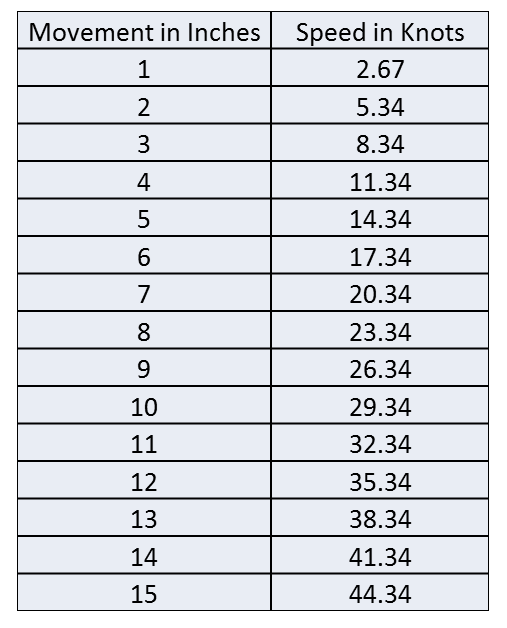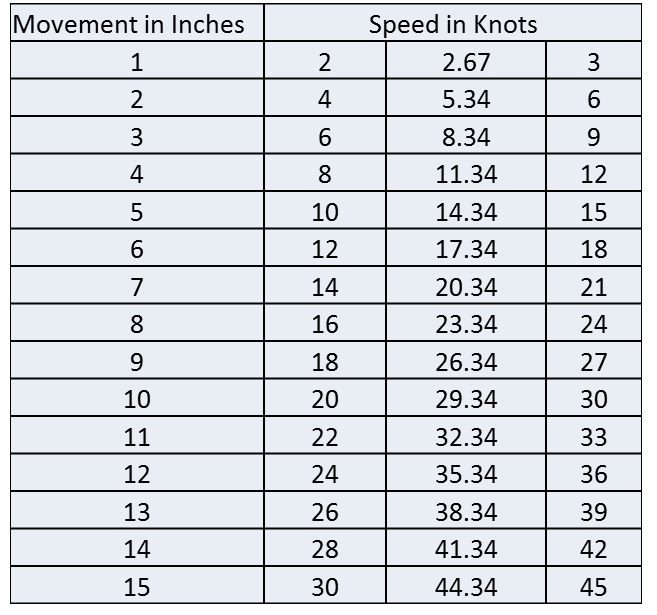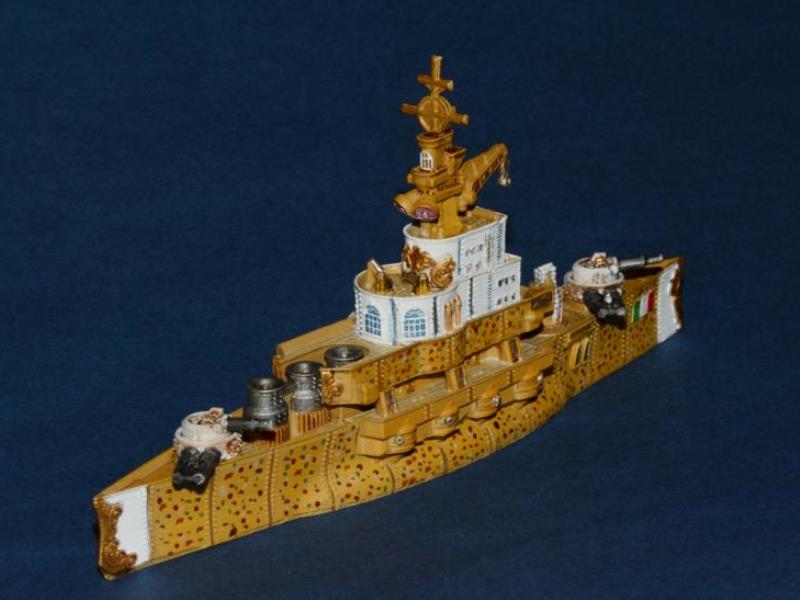Have you ever been playing a game of Dystopian Wars, and asked yourself just how fast your ships are “actually” moving? This is something that I’ve pondered for a while. There is no immediate answer at hand; Spartan has deliberately left some aspects of the game ambiguous, in an apparent effort to focus on making the gameplay for DW “feel” right. And admittedly, I think they succeeded very well at doing just that. Still, I can’t help but wonder…
Top Down Vs. Bottom Up
What is Spartan leaving out that makes it difficult to determine speed? Simply put, it is the map scale and the time scale. The map scale is what relates “real world” distances to distances on the table; how far “in real life” is one inch of table distance? The time scale is how much time passes in the game world per turn. For many historical games, these two characteristics are defined clearly and up front, and the rest of the game flows from them. This is what I like to think of as “bottom up” design. With these two variables nailed down, it becomes very easy to calculate a speed in knots (nautical miles per hour) for ship. The problem for us is that with DW (and indeed, all of Spartan’s games to date), map scale and time scales are not defined. Instead, model speeds are simply expressed in Movement (Mv) values of inches per turn. Adjusting these Mv values then becomes strictly a function of game balance and pacing. This is what I like to think of as a “top down” design philosophy. This means that any map and time scales that we may come up with will be something of a force-fit for a game that wasn’t originally built with them in mind. Still, this will be a fun exercise!
Historical Precedence
To begin approaching this problem, my first thought was to look at speeds for historical warships and compare them to their analogues in DW. I’m particularly interested in the ships of the WWII timeframe, as I think the tech base in DW most closely correlates with that time period of our world (though, we had far fewer stompy steam-powered robots). During WWII, the fastest surface craft were probably the motor torpedo boats operated by several different countries. These were essentially armed speedboats, and topped out at about 45 knots. For major warships, destroyers were typically the fastest, some being able to hit 40 knots in calm seas, though 36-38 knots was a more common max speed for “Tin Cans.” Aircraft carriers, and many newer battleships, were slower at around 32-33 knots. Older battleships were considerably slower, though; older American battleships, such as the ones at Pearl Harbor on 7 December 1941,for example, were designed for a maximum speed of 21 knots. Most cruisers were about as fast as the newer battleships and carriers, able to make about 30 knots. There were a few exeptions on both ends of the scale, though; the Italians completed a light cruiser in 1943 that was credited with being able to make 40 knots, while some WWI-vintage remnants were capable of barely 20.
Comparing Historical Speed to DW
For DW, the Frigates, Destroyers, an Corvettes are the closest match to WWII DDs, and they have speeds ranging from 12″ to 15.” This range also encompasses the only torpedo boats in the game, the LoIS Uccisore, which has a Mv of 12″. For most Medium Naval models, 10″ is about as fast as it gets without the help of a generator. Some are as slow as 7,” though most can do a tleast 8. Mv values of Battleships and Dreadnoughts in DW are in about the same speed range, between 6″ and 7,” again disregarding the effects of generators. So, if we take the 15″ movement of the fastest Small Naval models, and assume that matches the maximum 40 knot speed of destroyers in WWII, that means that 1″ of movement per turn would equate to 2.67 knots. Extrapolating that out in a linear fashion yields the following conversion chart:
 This seems mostly reasonable, though perhaps a bit unsatisfactory as it makes large models rather slow compared to most of their historical counterparts (though, a roll of a “6” for a kinectic generator doesn’t make an American dreadnought or battleship too fast for plausibility!) Just for fun, let’s see what the chart would look like using integer values of 2 and 3:
This seems mostly reasonable, though perhaps a bit unsatisfactory as it makes large models rather slow compared to most of their historical counterparts (though, a roll of a “6” for a kinectic generator doesn’t make an American dreadnought or battleship too fast for plausibility!) Just for fun, let’s see what the chart would look like using integer values of 2 and 3:
 Off the bat, it is clear that 2 Knots per inch of Mv is just too slow…the average battleship only being able to do 12 knots just doesn’t seem to fit given the relative level of technology shown in the game. 3 Knots per inch of Mv is a bit better, and I like that it pushes Large model speeds into a bit faster range than the 2.67 number does. On the flip side, though, the fastest of the smalls is now making 45 knots, which is a bit fast. So, I think going with the 2.67 knots per inch of movement fits best for my taste.
Off the bat, it is clear that 2 Knots per inch of Mv is just too slow…the average battleship only being able to do 12 knots just doesn’t seem to fit given the relative level of technology shown in the game. 3 Knots per inch of Mv is a bit better, and I like that it pushes Large model speeds into a bit faster range than the 2.67 number does. On the flip side, though, the fastest of the smalls is now making 45 knots, which is a bit fast. So, I think going with the 2.67 knots per inch of movement fits best for my taste.
Air & Ground Units
So far, we’ve only considered naval units. However, DW is about all three dimensions, so now lets see how our assumed speed of 2.67 knots/inch works for those units. On the ground, this appears to give no problems; small tanks are running around at a tad over 30 mph, while land ships are lumbering at around 20. To the extent that its reasonable something the size of a DW landship could move under its own power at all, 20 mph seems like a plausible speed, especially compared to the heaviest armored vehicles used during WWII. Aircraft, on the other hand, are a different story. Large airships that rely on gas envelopes or rotors to stay aloft don’t pose much of a problem, as they should have some ability to move slow and stay aloft. However, heavier than air models are now left with speeds that make no sense. Your average medium bomber, for example, is now moving at less than 30 knots. In comparison, the American B-17 heavy bomber had a stall speed of around 170 knots. I would submit, however, that this is a result not so much of my methodology, but rather of the fact that Spartan purposefully made aircraft Mv values low for gameplay and balance purposes. This makes perfect sense when you consider that the B-17’s stall speed of 170 knots equates to a Mv value of around 63″ using my conversion factor! Interestingly, what this suggests is that all flying models in DW, even those that appear to be conventional heavier than air aircraft, must have some sort of anti-gravity tech built in.
Conclusion
As I said at the beginning, this whole process is fraught with peril. DW was a game designed not for historical accuracy or realism, but for fun and engaging gameplay. Still, by making a few reasonable assumptions, it isn’t too hard to come up with a conversion factor that will turn Mv stat values into speeds expressed in knots. After examining a couple of alternatives, a conversion factor of 2.67 knots/inch of movement appears to be a decent compromise that prevents the fast models from being too fast and the slow models from being too slow. Of course, this factor also suggests some interesting things when it comes to deducing a table scale for DW, but that is topic for another post!
Until next time…
Update 2/22/16: Fixed a couple of typos and a math error for the speed of aircraft (63″ vs 450″).


As you pointed pointed out in the Podcast, realistically inserting aircraft into a Naval game requires carriers to basically never be on the table, and for aircraft to show up for one turn… Neither of which sells models. So, everyone breaks physics in order to shoe-horn them in.
Oddly, space games don’t have this issue, as the table scale is as large as necessary. A carrier launching spacecraft, which can travel hundreds or thousands of miles in a short time, are slow compared to instantaneous lasers with effective ranges far beyond this distance.
I enjoyed this 🙂
Pingback: Dystopian Wars: How Far is Far? | Man Battlestations Blog